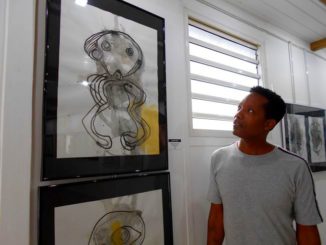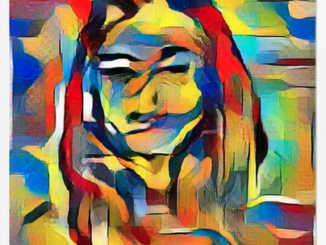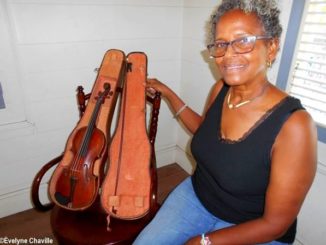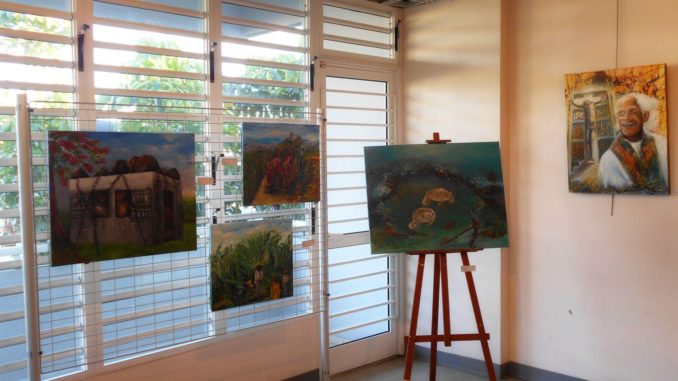
From February 10 to 28, the “KérArt” association presented its group exhibition entitled “Zyé Ouvè asi Manten” at the media library of Le Lamentin. The aim was to highlight the heritage of this town of Guadeloupe, among other things, through figurative painting.
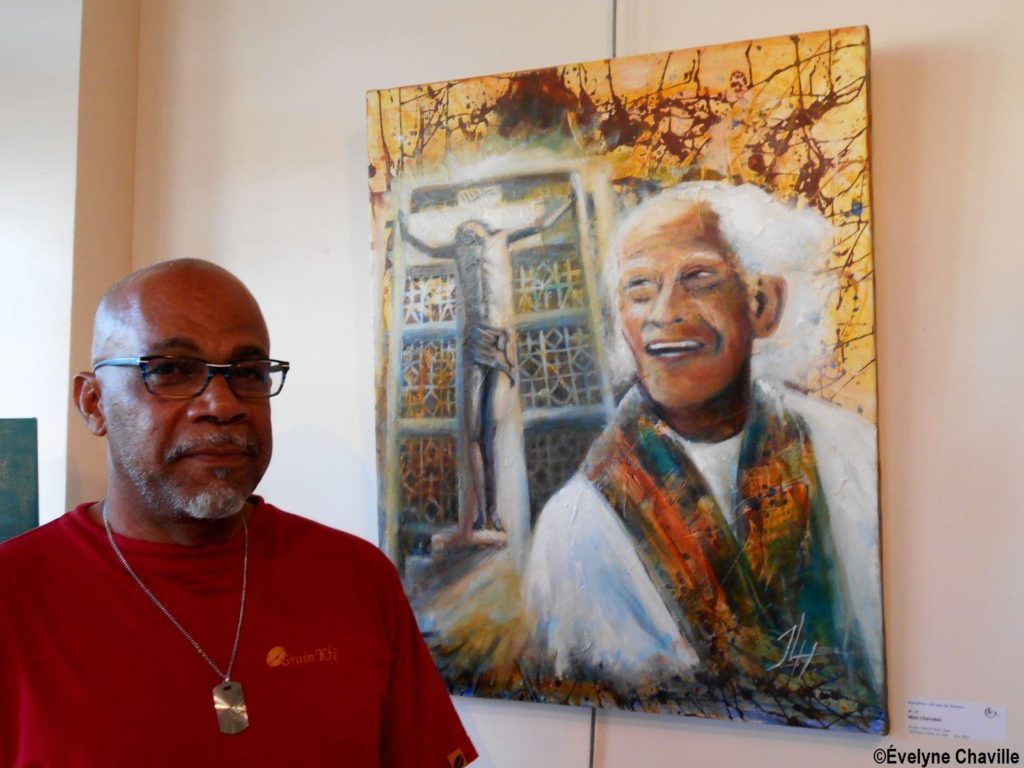
Ten painters and plastic artists – Jimmy Cétout, Françoise Charol, Claude Chovino, Céline Funfrock, Chimène Girard, Jean-Louis Halley, Florence Le Quellec, Rose-Marie Pascotto, Monique Rinaldo and Maurice Vital – participated in this exhibition entitled “Zyé Ouvè asi Manten” (A Look at Le Lamentin). They all had to present works related to this commune of the North of Basse-Terre and they were very inspired by its history, its economy, its houses, its fauna and its flora, its culture or its political life…
So, visitors had the opportunity to enjoy paintings representing inter alia : manatees (mammals that no longer exist in our waters but they gave their name to the commune and the Guadeloupe National Park is trying to bring back them to the island) ; the remains of the Grosse Montagne sugar factory, which closed permanently in 1994 after long strikes by farm workers ; Father Cherubin Céleste who struggled with those sugarcane workers in particular with a hunger strike in 1975 ; the sugarcane harvesting with these farm workers because, despite the closure of Grosse Montagne sugar factory, Le Lamentin continues de be an agricultural land ; small Creole houses ; the town hall and the church; the current mayor, Jocelyn Sapotille and the former mayor, José Toribio ; works of art installed on the territory because Le Lamentin was a pioneer town on the artistic level in Guadeloupe in particular with its École d’Arts Plastiques (Plastic Arts School) directed by the famous plastic artist, Michel Rovélas, in the 1990s.
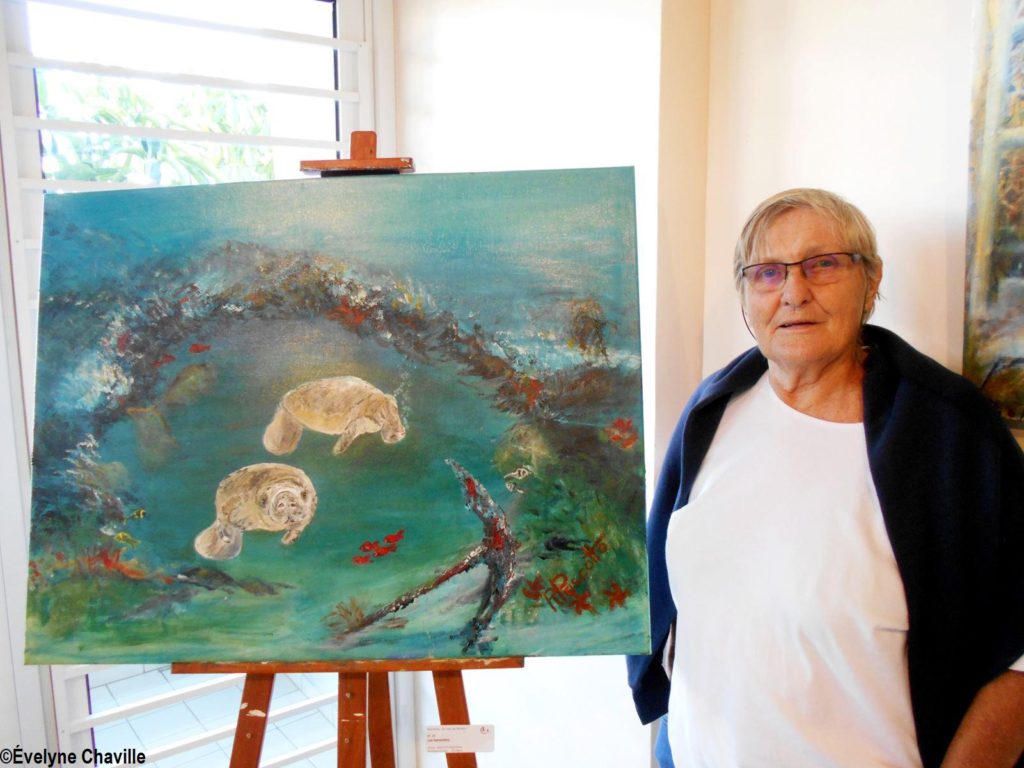
Le Lamentin’s heritage in the spotlight
Before arriving at Le Lamentin, the “KérArt” association had already organized three editions of this artistic event namely in Pointe-à-Pitre (Zyè Ouvè asi LaPwent, December 2012), Le Gosier (Zyé Ouvè asi Gozié, March 2015 ) and Baie-Mahault (Zyé Ouvè asi Bémao, May 2016).
“Through this series of exhibitions, the “KérArt” association which brings together a dozen painters and plastic artists wants to highlight the heritage of a town in Guadeloupe.The steps can be long enough to obtain the official agreement of municipalities and that is why the exhibition “Zyé Ouvè asi …” takes place on average every two or three years”, explains Jean-Louis Halley, the president of the association. The latter, who is a teacher at the Agricultural College, began to paint first at home then, he enrolled in courses given by the great Haitian painter, Maurice Vital, at the Office Municipal de la Culture et du Sport (OMCS) in Le Gosier. “Maurice gave me a start. I brought him some of my paintings and when he saw them, he told me that he had nothing to teach me and I had “the thing”, those were his exact words. But, I stayed with Maurice for four years and then, I continued my training with the painter Catherine Pugliesi Conti for three years (…) I started to show my work during collective exhibitions like “Lectures de peintres” (Painters’ Reading), he recalls. “I told him that he just had to develop the “thing”, so he stayed in my course after he left because an artist needs some experience”, says Maurice Vital.
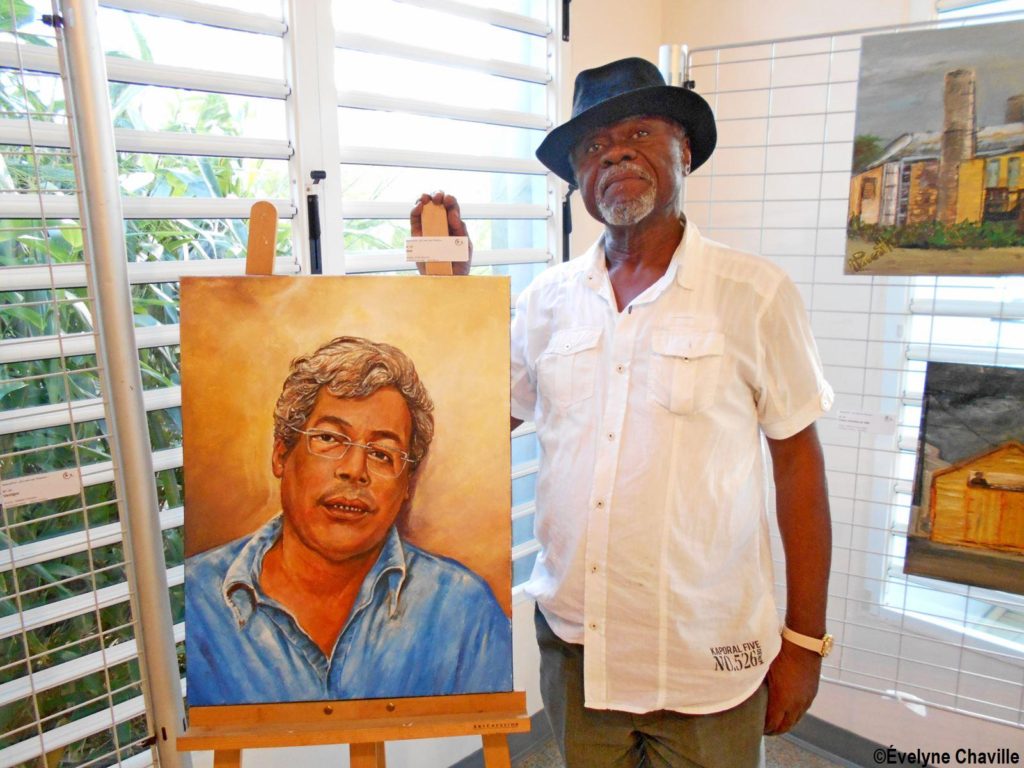
Figurative painting in the spotlight
This “monument” of Haitian painting chose to live in Guadeloupe since 1991 after a first stay between 1976 and 1978 and a second stay between 1986 and 1989 after his participation with the delegation of Haiti in the “Festival des Arts de Guadeloupe” (FESTAG), a major Caribbean artistic event which, unfortunately, no longer exists…
“Through this concept,”KérArt” also wants to promote the artists doing figurative painting. In Guadeloupe, we are afraid to portray ourselves then painters of figurative art are viewed in a negative light. The young generation prefers abstract painting”, says Jean-Louis Halley who also painted the portrait of his ancestor come from India. It is true that, today, this artistic style that represents reality is not very used by our painters… “However, every society needs to represent itself : over the centuries, first there was the figurative style with, for example, the portraits and even the great painters of abstract painting like Picasso first studied drawing and they mastered figurative painting”, adds Maurice Vital who considers his presence in Guadeloupe as a “mission” to pass on his knowledge to young people. “Moreover, in every exhibition we organize, I want there to be school visits”, he says.
The painters and plastic artists of “KérArt” should dedicate their next “Zyé Ouvé asi…” to the capital of Guadeloupe, Basse-Terre. In addition, the association would like to establish close ties with Caribbean artists and participate in exhibitions in Martinique, Haiti, Cuba etc.














































